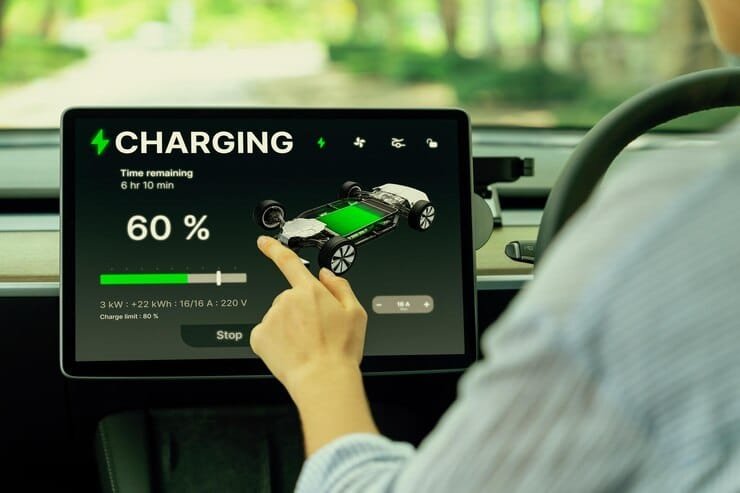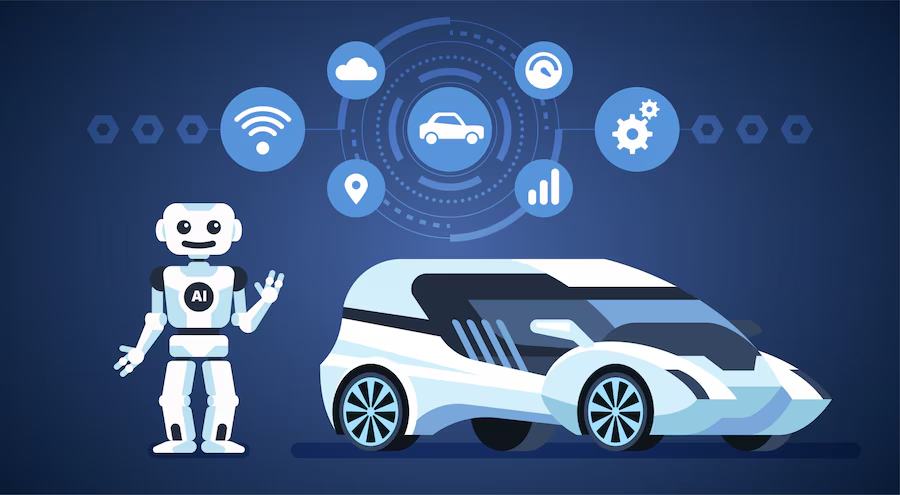Will Radar Kill the Self-Driving Car Dream?
The Radar Revolution: A bumpy road ahead?
- The Radar Landscape Today: Self-driving cars promise a future of effortless commutes and safer roads. But are we overselling the technology? Right now, the autonomous vehicle (AV) industry is a whirlwind of innovation, with lidar, cameras, and of course, radar, all vying for a place in the driverless future. Radar, a mature technology with a long history, initially seemed like a sure bet. Its ability to “see” through adverse weather conditions makes it a compelling contender. Yet, recent advancements in other sensor technologies are challenging its dominance.
- Radar’s Crucial Role: Radar isn’t just a futuristic gadget; it’s a critical component in numerous applications, from aircraft navigation to weather forecasting. In the realm of AVs, it provides crucial long-range object detection, even in challenging environments like fog and rain. This makes it a vital safety net, something many consider non-negotiable for fully autonomous vehicles. But can it keep up with the relentless pace of innovation in the AV sector?
- The Question Mark: The headline’s provocative, we know. But the future of radar in autonomous driving is genuinely complex. New sensor technologies boast impressive capabilities, sparking debate about radar’s ultimate role. Is it destined to play second fiddle, relegated to a backup safety system, or will it continue to be an indispensable component driving the self-driving revolution?
- What’s at Stake: The answer to this question has enormous implications. Billions of dollars are being invested in the development of AV technology, and radar manufacturers are heavily invested in the technology’s future. For radar professionals, understanding this shifting landscape is crucial for strategic planning and future innovation. For business leaders, grasping the potential limitations and strengths of radar is paramount for making informed decisions about resource allocation and technological investments. Let’s dive in and explore the challenges and opportunities ahead.
## Radar Market Trends: A Scannable Analysis
The radar market is buzzing with activity, a mix of exciting opportunities and looming challenges. Here’s a breakdown to help strategists navigate this dynamic landscape:

I. Positive Trends:
- Miniaturization & Cost Reduction: Radar technology is shrinking! Smaller, cheaper chips are making radar accessible to a wider range of applications, from smartphones (think Apple’s rumored future implementations) to IoT devices. This democratization fuels innovation and expands the market significantly. Actionable Insight: Invest in miniaturization R&D or partner with chip manufacturers to offer cost-effective solutions.
- AI & Machine Learning Integration: Smart radar is the future. Combining radar with AI allows for superior object detection, classification, and tracking. This opens doors to advanced applications in autonomous driving (e.g., Tesla’s Autopilot), robotics, and advanced driver-assistance systems (ADAS). Actionable Insight: Develop AI-powered algorithms to enhance radar performance and create unique value propositions. Partner with AI specialists.
- Expanding Applications: Radar isn’t just for defense anymore! New applications are booming in automotive, healthcare (vital signs monitoring, fall detection), industrial automation (obstacle avoidance in robots), and even smart homes (gesture recognition). This diversification reduces reliance on any single market segment. Actionable Insight: Explore and actively pursue opportunities in non-traditional sectors. Market research is key.
- Sensor Fusion: Combining radar with other sensors like lidar, cameras, and ultrasonic sensors creates a more robust and accurate perception system. This is crucial for applications demanding high reliability, like autonomous vehicles (e.g., Waymo’s multi-sensor approach). Actionable Insight: Develop sensor fusion expertise and build strategic partnerships with complementary sensor providers.
II. Adverse Trends:
- Supply Chain Disruptions: The global semiconductor shortage has impacted radar production. Securing a reliable supply chain is paramount. Actionable Insight: Diversify suppliers, build strong relationships, and explore alternative component sources. Long-term contracts are beneficial.
- Data Security & Privacy Concerns: As radar systems gather more data, concerns about data privacy and security arise. Robust data encryption and anonymization techniques are needed. Actionable Insight: Invest in cybersecurity measures and comply with relevant data privacy regulations (GDPR, CCPA). Transparency with customers builds trust.
- Regulatory Hurdles: The automotive and other sectors have strict safety and regulatory requirements. Navigating these regulations can be complex and costly. Actionable Insight: Engage early with regulatory bodies, proactively address compliance issues, and stay updated on evolving standards.
- Competition: The radar market is becoming increasingly competitive, with established players and new entrants vying for market share. Differentiation is key to survival. Actionable Insight: Focus on innovation, superior performance, and niche market applications. Strong branding and marketing will help stand out from the crowd.
Conclusion:
The radar market presents a compelling blend of opportunities and challenges. Companies that successfully navigate these trends by investing in innovation, strategic partnerships, and robust risk mitigation strategies are well-positioned for significant growth in this exciting technological landscape. Agility and adaptability are essential for success.
1. Automotive: Advanced Driver-Assistance Systems (ADAS) rely heavily on radar. Manufacturers use radar sensors to enable features like adaptive cruise control, automatic emergency braking, and blind-spot monitoring. This enhances safety and is a key selling point for consumers, driving innovation and market share gains. The accuracy and range of radar directly impact the effectiveness of these safety features.
- Manufacturing: Radar technology is used for non-contact level sensing in various manufacturing processes. This is particularly useful in handling liquids or powders where traditional methods might be inaccurate or impractical. For instance, radar sensors monitor the fill levels in tanks, preventing overflow or underfilling, improving efficiency and reducing waste. This application offers significant cost savings and improved process control.
- Healthcare: While less prevalent than other sectors, radar is finding applications in healthcare. For example, vital sign monitoring systems using radar can track respiration rate and heart rate without physical contact, enhancing patient comfort and reducing the risk of infection. This is particularly valuable in long-term care or intensive care settings.
- Technology: Gesture recognition systems in smartphones and other consumer electronics increasingly utilize radar technology for precise and reliable input. This allows for more intuitive and natural interaction, improving the user experience and opening new avenues for human-computer interaction. Accuracy and power efficiency are critical success factors here.
- Security: Perimeter intrusion detection systems leverage radar technology to monitor large areas for unauthorized access. This improves security and reduces the need for constant human surveillance. Businesses in sectors such as logistics or warehousing can use this to safeguard assets and reduce losses. This solution benefits from long-range detection capabilities.
- Retail: Radar-based people counting systems provide retailers with real-time data on customer traffic in their stores. This valuable information optimizes staffing levels, improves store layout, and enhances the overall customer experience. Understanding the flow of customers within a store is crucial for optimizing store operations.
- Autonomous Vehicles: Radar is a crucial sensor for self-driving cars, providing data on the vehicle’s surroundings, including the distance and speed of other vehicles and obstacles. The fusion of radar data with other sensor inputs (like cameras and lidar) is critical for accurate and safe navigation. High-resolution and robust radar performance are essential for reliable autonomous driving.
1. Focus on 4D Imaging Radar: Several companies are aggressively pursuing advancements in 4D imaging radar, going beyond traditional range, angle, and velocity to incorporate high-resolution imaging capabilities. This allows for significantly improved object detection and classification, crucial for autonomous driving and advanced driver-assistance systems (ADAS). For example, a company might be investing heavily in research and development of advanced signal processing algorithms to enhance the spatial resolution of their 4D radar sensors.
- Strategic Partnerships and Joint Ventures: In 2023 and beyond, we’ve seen increased collaborations between radar sensor manufacturers and automotive original equipment manufacturers (OEMs). These partnerships allow for faster integration of radar technology into vehicles and access to significant testing and deployment infrastructure. A specific example could be a radar company partnering with a major automaker to co-develop a next-generation radar system tailored specifically for a new vehicle platform.
- Expansion into New Markets: Radar technology’s applications extend beyond automotive. Companies are actively expanding into sectors like robotics, industrial automation, and smart infrastructure. A company specializing in automotive radar might, for instance, develop smaller, more cost-effective radar sensors for use in industrial robots, targeting a new revenue stream.
- Software-Defined Radar (SDR) Development: The shift towards SDR is accelerating. This allows for greater flexibility and upgradability of radar systems through software updates rather than hardware replacements. Companies are investing in developing sophisticated software platforms to manage and improve the performance of their radar sensors over their lifespan. This could involve creating a cloud-based platform for remote diagnostics and software updates for deployed radar systems.
- Acquisitions of Complementary Technologies: Inorganic growth is prominent. Companies are acquiring smaller firms specializing in areas such as AI-powered object recognition, high-performance computing, or specialized antenna designs to enhance their existing radar offerings. For example, a major radar manufacturer might acquire a startup specializing in advanced machine learning algorithms for object detection to improve the accuracy of its radar systems.
- Cost Reduction and Enhanced Manufacturing: Companies are focusing on optimizing their manufacturing processes to reduce production costs and increase scalability. This allows for greater competitiveness and broader market penetration. This might involve implementing advanced manufacturing techniques like 3D printing to lower production costs for certain radar components.

Outlook & Summary: Radar’s Role in the Self-Driving Revolution
Will radar kill the self-driving car dream? The short answer: Absolutely not. But its role is evolving rapidly, and understanding this evolution is key for industry leaders. Here’s what the next 5-10 years hold for radar in the autonomous vehicle (AV) space:
- Radar Resolution Revolution: Expect a dramatic leap in radar resolution. We’re moving beyond simple object detection to highly detailed 3D imaging, enabling far more precise environment understanding. Think of it as upgrading from a blurry snapshot to a crystal-clear high-definition video. This advancement is crucial for safe and efficient navigation in complex scenarios.
- Sensor Fusion is King: Radar won’t rule the AV roost alone. The future belongs to sensor fusion—the synergistic combination of radar, lidar, cameras, and other technologies. Each sensor complements the others, creating a more robust and reliable perception system than any single technology could provide on its own. Imagine a well-orchestrated band; each instrument crucial to the overall symphony.
- Cost Optimization & Scalability: The cost of high-performance radar needs to come down significantly for widespread AV adoption. We anticipate advancements in manufacturing processes and chip design leading to more affordable and scalable radar solutions. This is crucial for the technology to become truly mainstream.
- The Software Edge: While hardware improves, software will be the true differentiator. Sophisticated algorithms are needed to process the massive amounts of data generated by advanced radar systems and other sensors. Companies investing in AI and machine learning will be best positioned for success.
Key Takeaway: Radar is not a threat to the self-driving car dream; it’s a crucial component. However, its future success hinges on enhancing resolution, seamless integration with other sensors, and substantial cost reductions. The real race isn’t between different sensor technologies, but rather between companies mastering sensor fusion and intelligent data processing.
So, the question remains: How are your teams preparing for the sensor fusion-driven future of autonomous vehicles?






